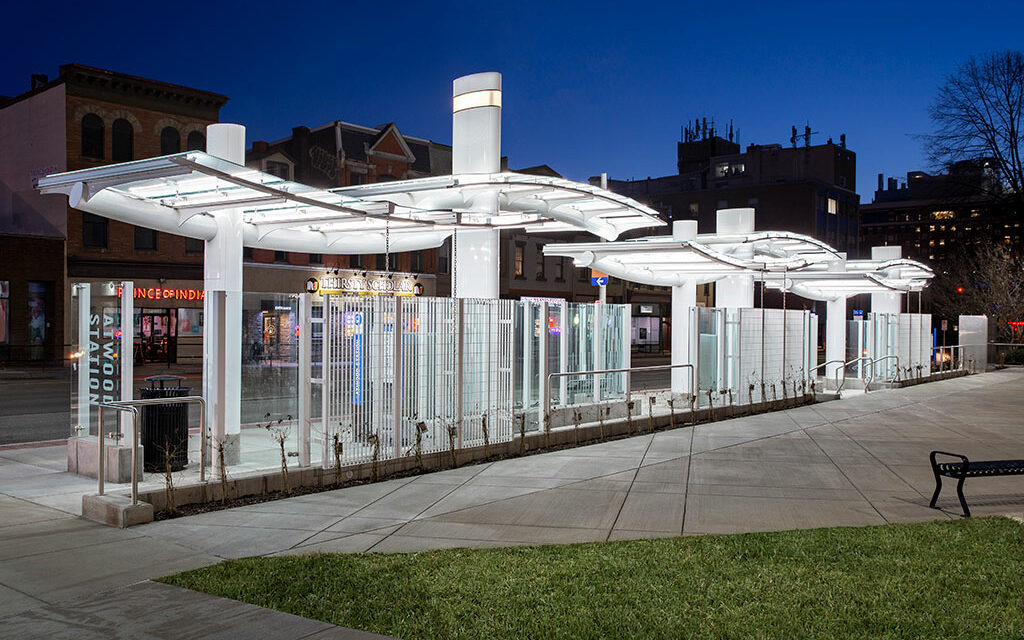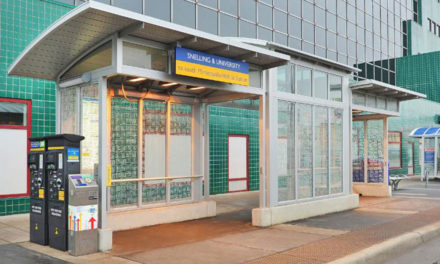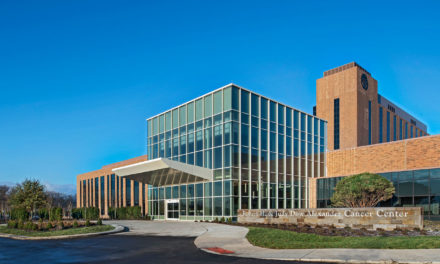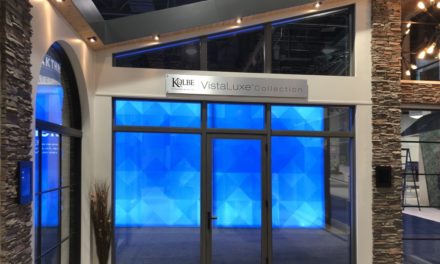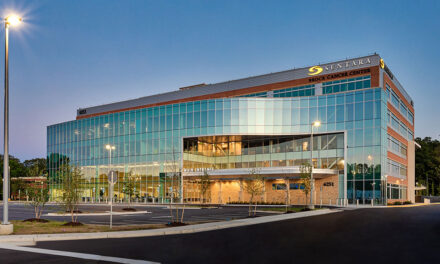Port Authority’s transit station’s glass canopy custom-engineered and fabricated by EXTECH
The new transit station at 5th Ave. and Atwood St. in Pittsburgh’s Oakland neighborhood features a glass canopy and custom aluminum framing system engineered and fabricated by EXTECH/Exterior Technologies, Inc. The station’s canopy shelters commuters from rain and snow, while allowing in natural light and views.
Atwood station is the highest use station outside of downtown Pittsburgh. The station connects to more than a dozen different routes operated by the Port Authority of Allegheny County. The Port Authority’s 2,600 employees operate, maintain and support a fleet of more than 700 buses, 80 light rail vehicles and one inclined planes. These vehicles provided more than 62 million rides in 2018, an average of 220,000 rides on weekdays, and 50,000 rides on Saturdays and Sundays.
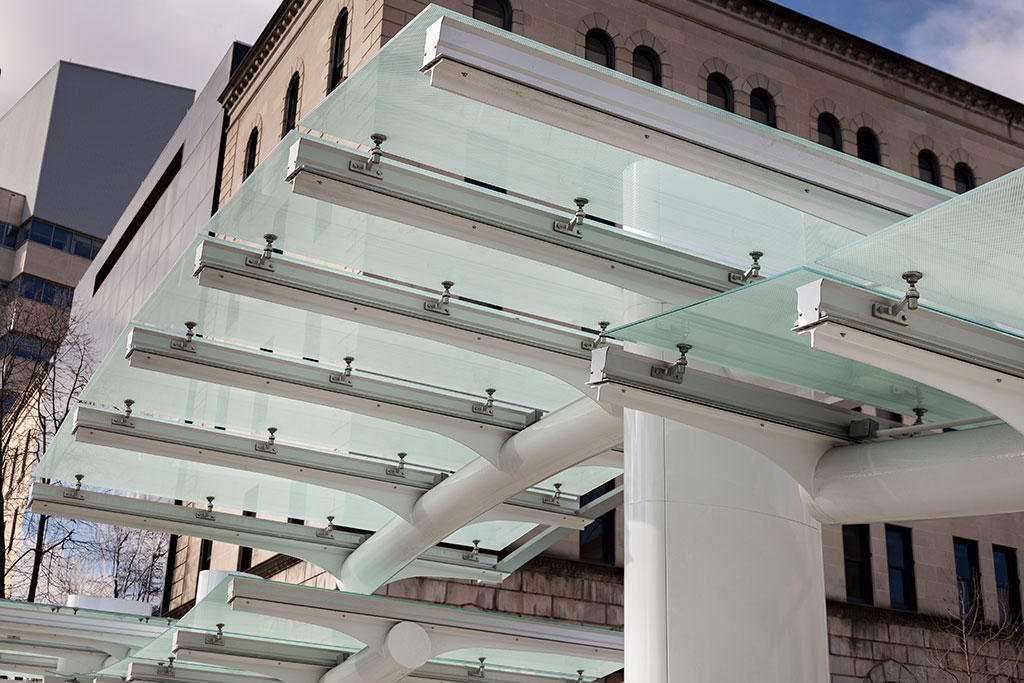
Photo credit: Dave Bryce Photography, courtesy of EXTECH
Located in Pittsburgh, EXTECH provided the transit station’s team with a local resource drawing from national expertise. EXTECH worked closely with architect Greg Maynes from concept to completion. The 1,473-square-foot, low-rise, segmented, glass canopy features three taller sections overlapping three shorter sections. Maynes explained, “These two types of canopies could be scaled to form different station sizes. The station’s asymmetrical columns resemble a tree structure supporting the cantilevered glass canopies.”
The canopy’s modular, angled design also conveniently avoided utility lines and more effectively shed water into the gutter system, according to Maynes. EXTECH engineered the custom gutter and downspout as integral to the canopy system’s extruded aluminum framing.
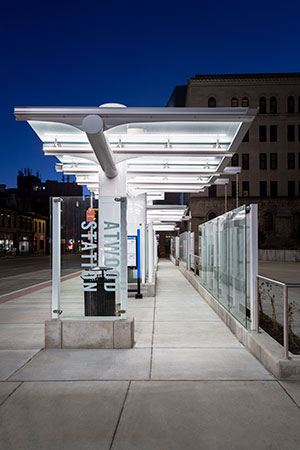
Photo credit: Dave Bryce Photography, courtesy of EXTECH
“The custom gutter extrusion combined glass support, an indirect LED light shelf, electrical wire management and drainage within a single element, which reduced the overall canopy profile and cost. Its unique cross section was developed to accommodate the wide variety of mounting angles dictated by the elegant undulating design of the canopy,” said Kevin Smith, EXTECH’s director, product application and design.
“The canopy system was complicated,” acknowledged Maynes. “We needed to know it would be properly engineered. That’s the reason we did the work with EXTECH. We were able to go back and forth throughout the project’s design. They engineered the entire system and proposed a slicker solution that required less maintenance.” The gutter design enhancement also made the canopy system more economical to install and more effective at managing precipitation.
The canopy underwent rigorous testing to ensure it withstands constant exposure to both Pittsburgh’s high volume of bus riders and its seasonal changes including spring rain, summer heat, autumn winds and winter snow, ice and road salt.
To verify the intended performance and appearance, EXTECH provided a mock-up for the architect’s and owner’s review. Once approved, EXTECH fully fabricated the canopy in its facility then shipped the components to the job site for a quick installation.
“Mock-ups are an important step in the design of custom projects, and especially in the case where lighting is involved,” said Jim Leslie, EXTECH’s general manager. “For this project, the mock-up process allowed us to verify that the unique geometry of the spider fittings and curved gutters worked as planned, and allowed the architect to confirm that the lighting would meet their design intent.”
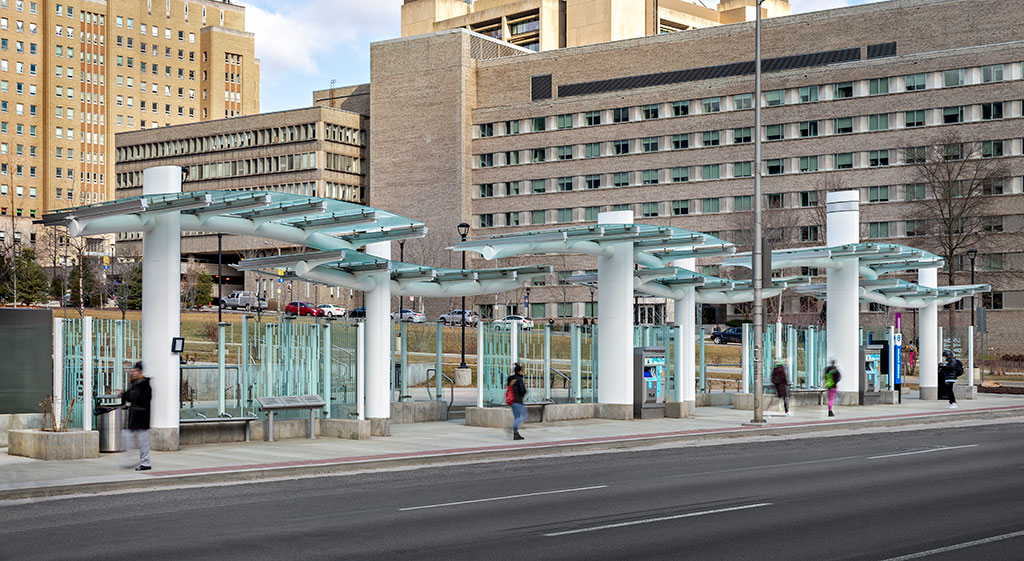
Photo credit: Dave Bryce Photography, courtesy of EXTECH
Each section of the canopy spans approximately 20 feet wide by 12 feet long and is comprised of 9/16-inch-thick, clear, laminated Viracon glass. “There is an 80% frit pattern on the underside of the glass to let the light through without the unwanted solar heat,” Maynes noted. “It seems like it rains 365 days per year here, so it’s dark a lot. We wanted to make it feel as bright as possible during the daytime.”
Adding more brightness to the station, LEDs were incorporated along the glass edge. “The glass essentially glows at night,” said Maynes.
Supporting the glass, the custom aluminum framing was finished in a Class I clear anodize. The asymmetrical steel support columns were finished in white. The neutral color palette was intentional. Maynes elaborated, “The station’s design is architecturally unique, but not in conflict with any of the other types of architecture surrounding it. It’s meant to be light on the landscape and should not interfere with the visual nature of the neighboring buildings.”
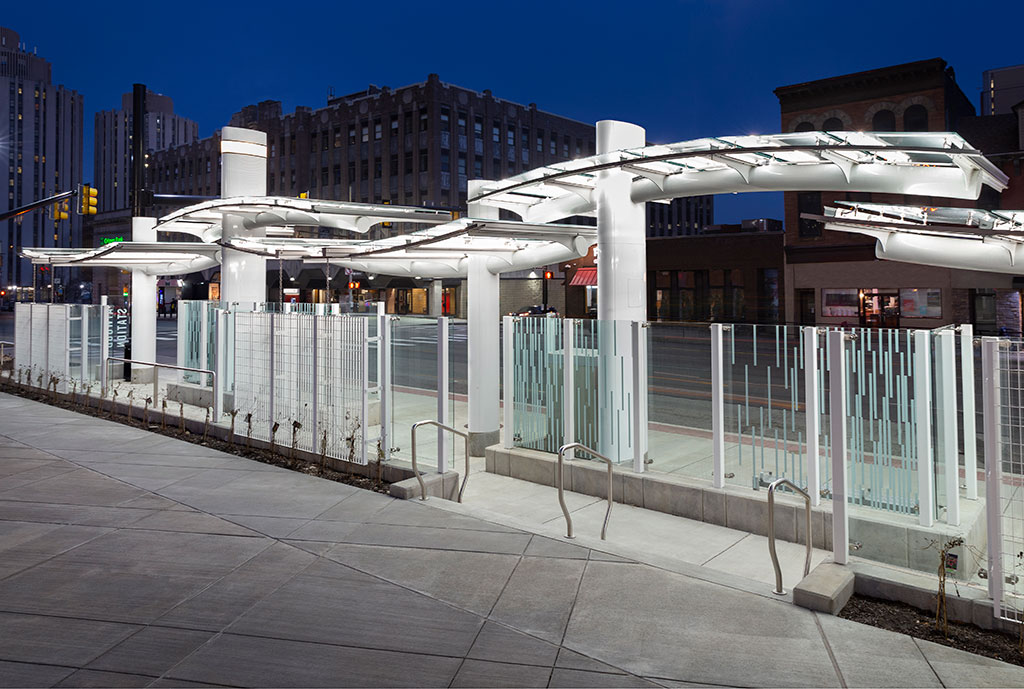
Photo credit: Dave Bryce Photography, courtesy of EXTECH
The Atwood station supports Port Authority’s mission to deliver outstanding transportation services that connect people to life. Its vision is to become America’s premier public transportation agency. It is governed by an 11-member board appointed by the Allegheny County Executive, leaders from both parties in the Pennsylvania House of Representatives and Senate, and the Governor of Pennsylvania. Funding comes from county, state and federal sources, and fare and advertising revenue.
Atwood Station, Pittsburgh, PA 15213
Owner: Port Authority of Allegheny County; Pittsburgh; https://www.portauthority.org
Architect: Greg Maynes, Moshier Studio (formerly with Maynes Associates + Architects, LLC); Pittsburgh; https://www.moshierstudio.com
Canopy system – glass fabricator: Viracon; Owatonna, Minnesota; http://viracon.com
Canopy system – engineer/fabricator: EXTECH/Exterior Technologies, Inc.; Pittsburgh; https://extechinc.com
Photographer: Dave Bryce Photography

